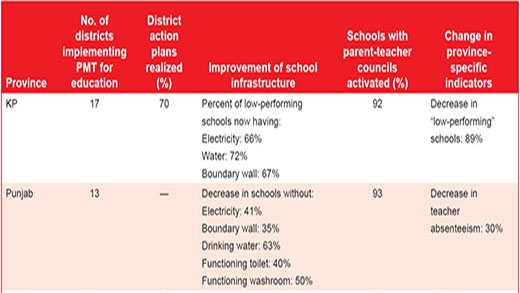Pakistan established a national EMIS (NEMIS) in 1993 to collect, maintain, and disseminate data to support policy making, planning, and management at each level of government.
Despite a number of challenges facing the national system - lack of funding, human resources constraints, delays in district data submission and inconsistent data quality - local governments and school authorities have succeeded in using EMIS data to improve education quality and learning outcomes. This note argues that in decentralized settings using EMIS data at the local level can help bypass problems with the national system, create the right incentives for enhancing data quality, and improve education indicators due to informed decision making.

